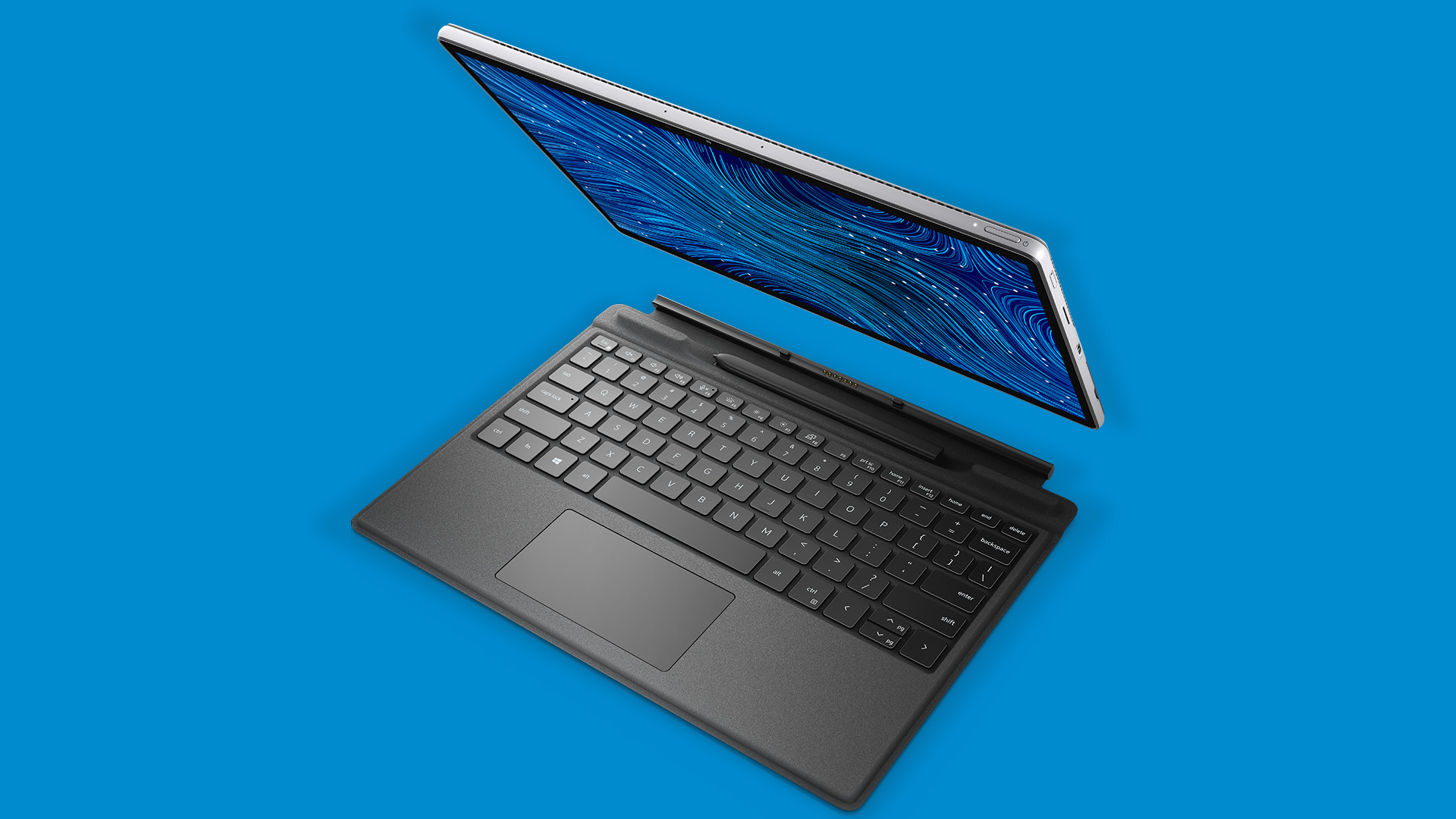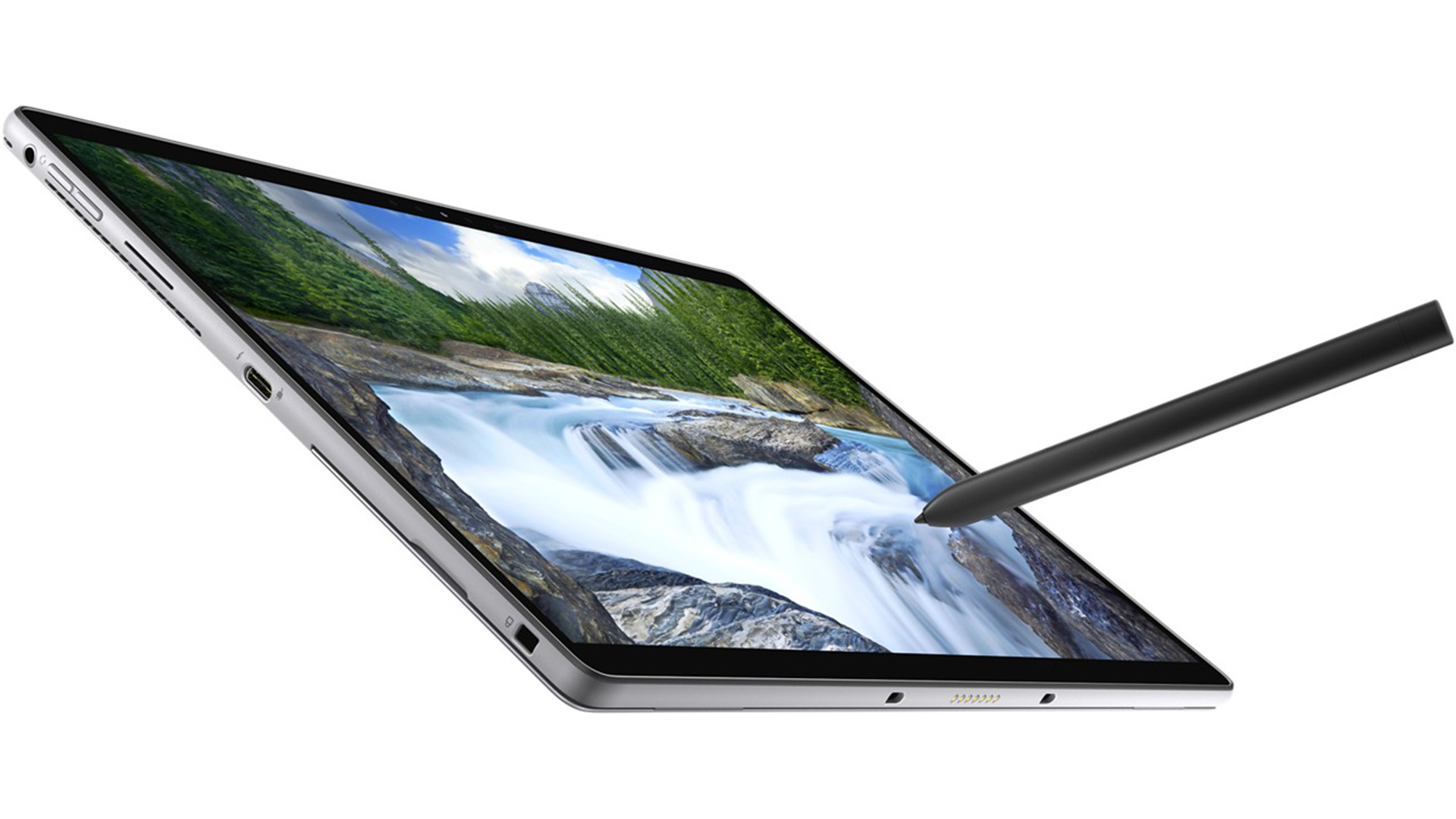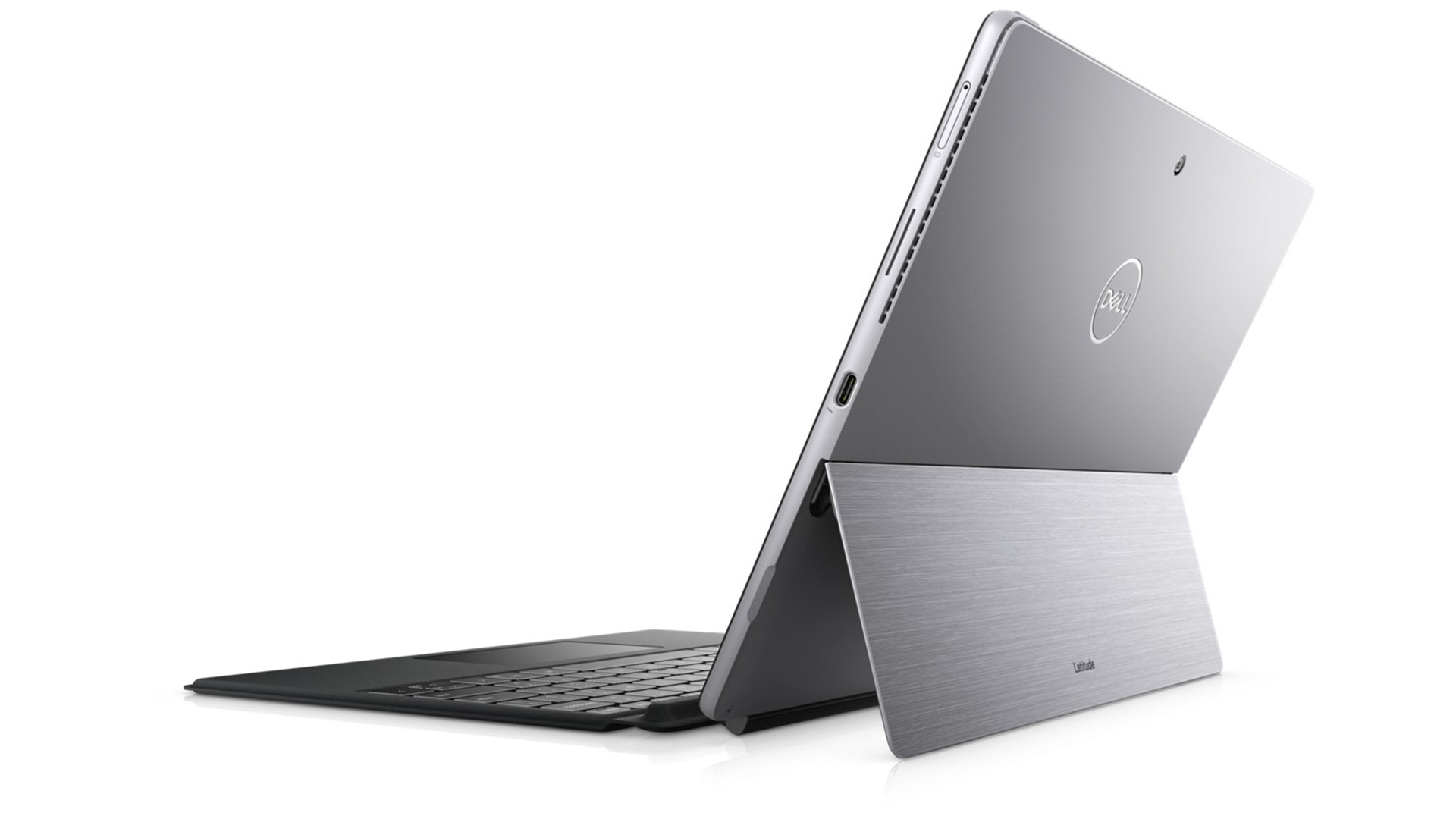Dell Latitude 7320 Detachable Laptop review: a remote working superstar
The Dell Latitude 7320 Detachable is a powerful hybrid machine designed for work but capable at handling almost anything you throw at it


The Dell Latitude 7320 is a powerful tablet with an excellent battery life that offers some stiff competition to the Surface Pro range. It will cost you a bit more, but its performance justifies the spend.
-
+
Sleek, tough design with aluminum case
-
+
Thunderbolt ports on either edge can be used to charge
-
+
Excellent battery life
-
-
USB-A devices will require a converter dongle
-
-
Keyboard and pen cost extra
Why you can trust T3

The Dell Latitude 7320 Detachable is a tablet-style 2-in-1 laptop with a snap-on keyboard that bears more than a passing resemblance to the Microsoft Surface Pro. That’s not a bad thing, though, and the 7320 does add a couple of nice touches that make it a good, if more expensive, pick for corporate users.
Dell Latitude 7320 Detachable review: Price and availability
The Dell Latitude 7320 Detachable was launched in April of 2021, and costs $1,559 / £1,475 /AU$2,449 and up. Our review model, with the i7-1180G7 processor, 16GB of RAM, and a 256GB SSD was priced at $2189 / £2,475 /AU$3,459 direct from Dell. Those prices don’t include the $199.99 (approx. AU$270) keyboard and the $69.99 (approx. AU$95) Dell Active Pen that we also tested.
Check our Dell discount codes to save on your order.

Dell Latitude 7320 Detachable review: Screen and design
Like most tablet-style laptops, the screen is the main feature. That’s a good thing, as the 13-inch FHD (1920 x 1280 pixels) display is big and bright, with small bezels on the left and right sides. I found that this screen had excellent color and was very bright, managing an impressive 340 Cd/M2. That makes it easy to see in all but direct sunlight – if you use the screen when out and about, you should have no problem seeing what you are doing.
The tablet body is pretty thin at just 0.67 inches thick, 12.07 inches wide and 7.8 inches tall. On each side of the tablet body is a Thunderbolt 4 port, either of which can be used for charging. As anyone who has had to deal with a USB charging cable that is just too short or who has tried to use a tablet in portrait mode while charging will tell you, this is a great feature that makes life easier. It also means you can use a USB device like a card reader while charging, so you don’t have to carry an external dock around with you.
The downside of this is that if you want to use an older USB device with the larger Type-A port, you’ll need to carry around the included USB-C to USB-A dongle or invest in an external dock.
The top and bottom bezels of the screen are thicker than the sides, with the webcam and face sensor in the top and the magnets that hold the snap-on keyboard underneath the wider bottom bezel. The optional Active Pen sits in a dip in the optional keyboard that fits against this bezel. The pen is also charged while it is in this space from a couple of contacts in the keyboard. Dell claims it can charge in 30 seconds. It’s a neat design that keeps the pen much safer than magnets or a clip on the side when not in use, but again, it owes more than a little to Microsoft’s design for the Surface Pro X.
Get all the latest news, reviews, deals and buying guides on gorgeous tech, home and active products from the T3 experts
Support for Wi-Fi 6 is included, with a 2x2 antenna setup that can handle up to 160Mhz of bandwidth. An optional 5G modem can be installed as an option, but this has to be done when you buy – you can’t install it yourself.
There are cameras on the front and rear of the tablet body, and each can capture 1080P video or 5-megapixel still images. These cameras also include a neat feature called ExpressSign-in; when you sit down in front of the tablet, the camera detects the movement and comes out of standby, ready for you to log in. If you get up and walk away, the camera will detect this and lock the device. Also on the rear of the tablet body is a fingerprint reader which can log you in with a touch.
I found the clip-on keyboard to be pretty comfortable to use, although the keys had limited travel, so you don’t get much feedback when you press a key. There is also a little bounce if you are a vigorous typist as the whole keyboard flexes. The touchpad on the keyboard is large and comfortable to use, responding quickly to touches and taps. The wrist rests also have a comfortable textured feel.
The optional Active Pen is also comfortable to use, with a flat design that fits well into the hand. It feels more like an expensive fountain pen than the biro-like designs of most screen pens.
Dell Latitude 7320 Detachable review: Performance
I tested the performance of the Dell Latitude 7320 Detachable using the PC Mark 10 benchmark, and it achieved a score of 4563. That’s a very decent score for a tablet, but it is a little slower than more performance-focused laptops like the Lenovo X1 Nano (score of 4768) or the Dell XPS 13, which scored 5115. While I don’t have the PC Mark 10 scores for the Surface Pro 7, its Geekbench scores are considerably lower than the Latitude’s.
The Latitude 7320 certainly didn’t feel slow in everyday use. It ran apps like Microsoft Office and Google Docs without problems and was fast enough to handle large spreadsheets in Excel. It did lag a bit when editing video, and the 256GB SSD installed on our review unit didn’t leave a lot of room to store video – even with only Windows 10 installed, it only had about 140GB of free space.
This isn’t really a gaming machine, so it is perhaps no surprise that the Latitude 7320 didn’t do that well on the 3D Mark gaming graphics benchmark, scoring just 1376. The Intel Xe graphics processor built into the CPU is quite capable of handling most tasks, but gaming is perhaps a step too far. That’s a pity, as the big, bright screen and tablet form factor would be great for playing games on.
As you would expect with a company that sells corporate systems like Dell, this model can also integrate with its remote management and systems. If your IT department throws a copy of Dell Command Suite on it, they can remotely upgrade, reset, reinstall or revive it from a distance.

Dell Latitude 7320 Detachable review: Battery
I was impressed with the battery life of the Latitude 7320. Using the PC Mark 10 video test, it ran for 9 hours and 56 minutes. For comparison, the XPS 13 ran for six hours and 14 minutes, so the Latitude has over three hours of extra battery life. I also tested the Latitude with the PC Mark 10 modern office battery test, where it ran for an impressive 9 hours and 36 minutes. This simulates a light load of tasks such as writing letters, video calls, etc. so you should get great mileage out of this laptop if you prefer to work on long flights rather than watch movies.
Dell Latitude 7320 Detachable review: Verdict
There is a lot to like about the Latitude 7320 Detachable. It has good performance, excellent battery life and a clear, bright screen. There are also some nice touches that you don’t get on similar tablet machines, such as two Thunderbolt 4 ports and the fingerprint reader. So, it is a very solid machine that can handle most things you would want to throw at it, and keep doing so for a long time away from the home or office.
With the Surface Pro 7 starting at under $1,000 including the keyboard and pen (and cheaper offers popping up regularly), even the cheapest model of the Latitude Detachable can seem expensive. But remember, you’re getting an 11th gen processor compared to a 10th gen one, which is likely to last you much longer and give a much better performance. You need to look at the business-only Surface Pro 7+ for a comparative model, and then the prices are much more closely matched.
Dell Latitude 7320 Detachable review: Also consider
There are a lot of models that share the style and approach of the Latitude 7320 Detachable at varying price points. The first obvious comparison is the Microsoft Surface Pro 7, the latest iteration of the model that pretty much created this category. The Surface Pro 7 starts at a lower price: you can get the base model for less than a thousand dollars, and we’ve seen plenty of offers that reduce this to under $800. The Pro 7 uses an older processor, though, and comes with only 8GB of RAM as standard.
The other similar model from Microsoft is the Surface Pro X2. This has a similar design to the Latitude (especially the pen) but is somewhat thinner. The problem with the X2 is that it uses an ARM processor, which means that programs need to be rewritten for this different processor, or the ARM processor has to emulate the Intel processor, which means it runs slower.

Richard Baguley has been writing about technology since the 1990s, when he left a promising career in high finance to work on Amiga Format magazine for Future. It has been downhill for him ever since, writing for publications such as PC World, Wired and Reviewed.com. He has tested gadgets as diverse as 3D printers to washing machines. For T3, he covers laptops, smartphones, and many other topics. He lives near Boston in the USA with his wife, one dog, and an indeterminate number of cats.